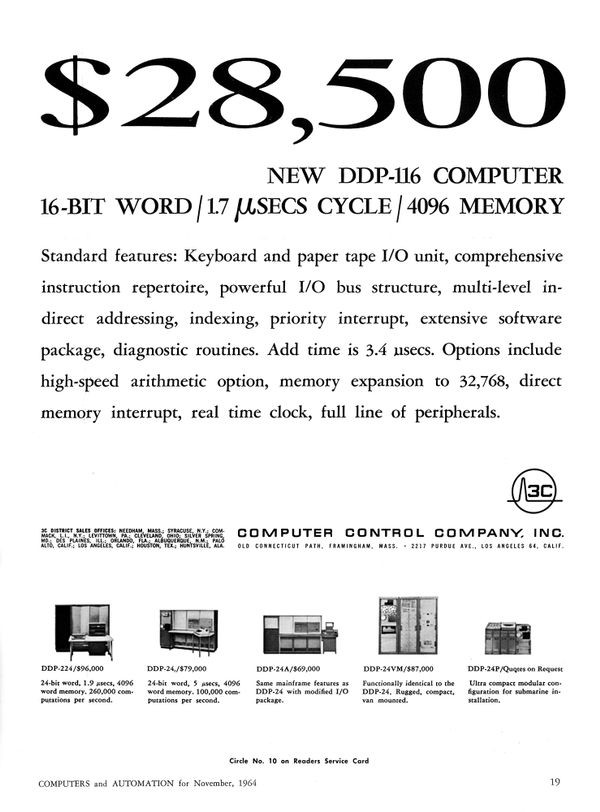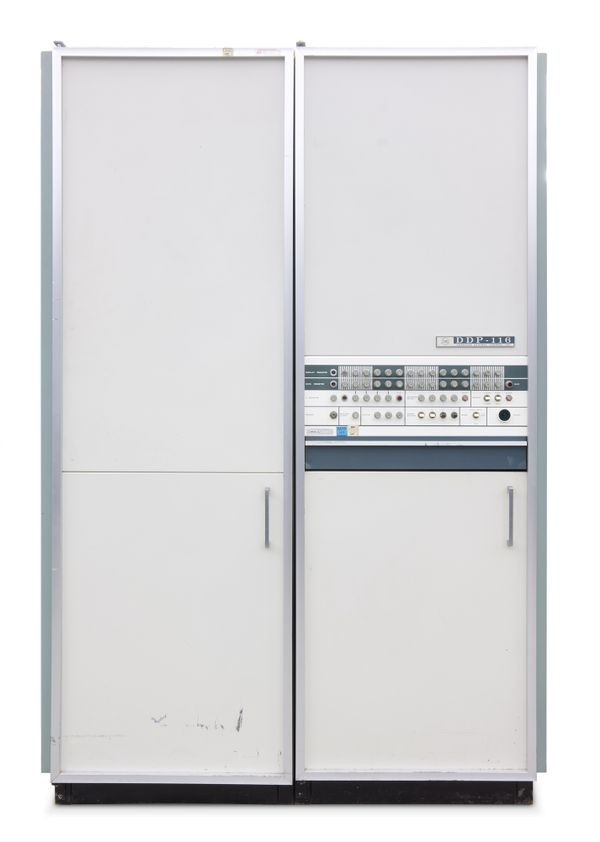The Price is Right
DDP-116 advertisement
The 116 was priced to compete with the $28,000 PDP-5, a much slower 12-bit machine from DEC. But just one month before the 116 shipped, DEC priced its next generation PDP-8 at $18,000.
The Price is Right
The falling price of minicomputers attracted new users—and new uses. That meant some people had to improvise. If there was no software available to run your particular assembly line, or perform your novel task, you wrote your own.
Competition among mini manufacturers became fierce. Some emphasized low cost; others, higher performance. Customers had plenty of choices.
DDP-116 General Purpose Computer
The 116 was the world's first 16-bit minicomputer and reasonably successful, with 172 shipped. But its successors, the IC-based 416 and 516, sold more than 750 machines.
View Artifact DetailLess is More: The 16-bit Mini
Computer Control Company’s (3C) expensive 24-bit computer, the DDP-24, sold for $89,000. The company, reasoning that it could expand its market by shrinking the price below $30,000, designed the first 16-bit minicomputer: the DDP-116.
The next version, the DDP-516, was used in the initial nodes of the Arpanet, the predecessor of today’s Internet.
Gerber Scientific Model 75 plotter
One DDP-116 customer was Gerber Scientific, which used it to control a very large, fast, flat bed plotter that could create, for example, full size engineering drawings of airplane parts.
View Artifact DetailRelated Content
Gardner Hendrie, the designer of one of the first minicomputers, the DDP-116, talks about the machine’s origins.


